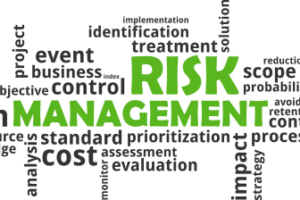
All About FRM Course [The Only Guide You’ll Need in 2025]
All About FRM Course
[The Only Guide You’ll Need in 2025]
Professionals with the ability to understand, measure, and reduce risk are more valuable than ever. Financial uncertainties, regulatory shifts, and global economic shocks have made this expertise critical. For individuals aiming to specialize in risk management, the Financial Risk Manager (FRM) credential is now a trusted benchmark.
This 2025 guide to the FRM certification is the only reference you’ll need if you plan to enter this exciting domain.
Here, you will learn what FRM is, the advantages of becoming certified, the course details, its duration, and cost. We will also highlight leading options such as GRMI’s PGDRM program, an India-based pathway to global risk leadership.
What is FRM?
The FRM certification is a globally recognized credential for financial risk professionals. It proves expertise in identifying, assessing, and reducing different categories of financial risk.
The qualification is highly respected in industries such as banking, investment management, insurance, consultancy, and regulatory organizations.
Holders of the FRM certification are known for strong technical knowledge and awareness of global risk trends. These abilities are highly valuable in today’s unstable economic environment.
FRM Course Details: What You Will Learn
The FRM curriculum covers essential areas of modern risk management. It ensures candidates develop technical expertise along with practical knowledge for real-world situations.
Key learning areas include:
- Quantitative Analysis
- Financial Markets and Products
- Valuation and Risk Models
- Market Risk
- Credit Risk
- Operational and Resilience Risk
- Liquidity and Treasury Risk Management
- Investment and Risk Strategies
- Current Issues in Financial Markets
The curriculum builds professionals who are job-ready and prepared to handle diverse financial risk challenges.
How Long Does It Take to Complete the FRM Course?
The timeline depends on each candidate’s preparation style and schedule. On average, most learners complete the full course in one to one and a half years.
A focused study plan usually requires at least 200 to 250 hours of preparation for each level of the curriculum.
Full-time students or those who can dedicate breaks often finish sooner. Working professionals may take longer due to job responsibilities.
Who Should Take the FRM Course?
The FRM certification is ideal for:
- Finance professionals aiming to specialize in risk management
- MBA and CFA graduates who want deeper risk expertise
- Economists and engineers entering finance roles
- Regulators or government officers handling financial supervision
- Fresh graduates aiming for global careers in finance and risk
The credential is gaining popularity among young professionals seeking opportunities in multinational firms.
Does FRM Make Sense?
While FRM is highly respected, it primarily focuses on exams and theoretical foundations. For learners seeking applied education, GRMI’s Post Graduate Diploma in Risk Management (PGDRM) offers a powerful alternative.
The PGDRM and GRMI: A Practical Alternative to FRM
While FRM is highly respected, it primarily focuses on exams and theoretical foundations. For learners seeking applied education, GRMI’s Post Graduate Diploma in Risk Management (PGDRM) offers a powerful alternative.
Why Choose GRMI’s PGDRM?
- Comprehensive Curriculum: Covers more than 40 enterprise risk areas, including operational, financial, cyber, and ESG risks.
- Practical Learning: Emphasizes internships, simulations, and hands-on projects.
- Industry Faculty: Learn from senior professionals at leading firms like Deloitte, EY, PwC, and KPMG.
- Tech Skills: Includes training in Excel, Power BI, and Python for modeling and reporting.
- Career Support: Proven placement record in consulting, corporate risk, banking, and fintech sectors.
Whether or not you pursue FRM certification, GRMI equips you with broader skills for enterprise and financial risk management.
Study Strategies to Ace the FRM Exam
To clear FRM successfully, preparation must be disciplined and consistent. Here are some effective tips:
- Start early: Begin at least six months before the exam.
- Use quality resources: Focus on reliable prep guides and official books.
- Follow a schedule: Dedicate fixed hours weekly for study.
- Practice often: Attempt at least five to ten mock exams before the final test.
- Understand concepts: Avoid rote learning, especially for valuation and risk models.
- Join study groups: Collaborative learning can clarify doubts and strengthen understanding.
Dedication and structured planning make the FRM exam achievable.
Career Opportunities After FRM
Clearing the FRM opens doors to a wide range of career roles, including:
- Risk Analyst
- Credit Risk Manager
- Market Risk Consultant
- Quantitative Analyst
- Compliance Manager
- Treasury Risk Officer
Industries employing FRM professionals include banks, hedge funds, insurance firms, consulting agencies, and asset management companies.
As India grows into a global financial hub, demand for FRM-certified professionals continues to rise. International opportunities are also expanding rapidly.
Conclusion: Your Path to a Future-Proof Career
Risk management is no longer a back-office function. In 2025 and beyond, it will remain central to strategic decision-making across industries.
Pursuing the FRM certification, GRMI’s PGDRM, or both, can prepare you for high-growth, impactful roles in finance.
By understanding course details, costs, and timelines, you can plan your journey effectively. When paired with GRMI’s experiential learning and placement opportunities, you gain a strong foundation for long-term success.
Take the first step today. Whether you choose the academic depth of FRM or the applied expertise of PGDRM, your career in risk management will be future-ready.
You may also like

Best Short Term Courses in IT for Freshers

What is the Best Course in Risk Management in India?


